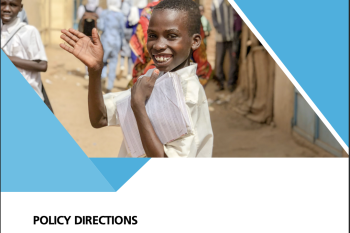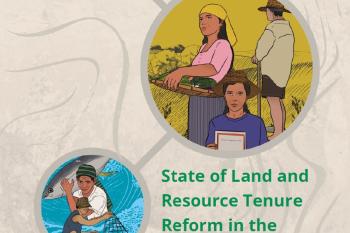To ensure a better and more sustainable future for all, the 2030 Agenda for Sustainable Development (“the 2030 Agenda”) has identified 17 Sustainable Development Goals (SDGs) to be achieved by 2030. SDGs range from poverty eradication, zero hunger, decent work and reduced inequalities to quality education, clean water and sanitation, and gender equality, only to name some of them.
To monitor progress made towards the SDGs, a total of 244 statistical indicators have been developed accordingly, including indicators to monitor women’s land rights (WLRs). Women’s full realization of their land rights (LRs) is not only a key factor in reducing gender disparities and improving women’s living conditions—including the full realization of human rights—but also a key vehicle to eradicate extreme poverty and hunger and ensure a path to sustainable development.
This guidance tool aims to explain the practical steps towards enhancing the quality of women’s land rights data and statistics for data producers, analysts, and researchers. In doing so, it addresses critical gaps in the quality of the design, collection, analysis, management, and dissemination of data and statistics on women’s land rights.
The tool recognizes the diverse relationships between women and land with respect to their land rights, which vary from country to country and even context to context, based on legal, policy, and institutional regimes.
In particular, this tool provides guidance on survey design, data collection, statistics development process, analysis, and reporting on women's land rights data. It suggests good practices for enhancing the quality of data and statistics on women’s land rights in the context of measuring, monitoring, and reporting on Sustainable Development Goals indicators 1.4.2, 5.a.1, and 5.a.2.
This tool is for use by data producers and data users alike. It is a useful tool for government data and statistics authorities, international organizations, the private sector, civil society, academia, research, and grassroots organizations that generate and/or use women’s land rights data and statistics. Building on the global methodologies for monitoring these SDG indicators, this tool profiles and strengthens responsiveness to women’s land rights issues in the generation of data and statistics to ensure quality and reliable data for evidence-based decision making.
This work is co-published by the United Nations Entity for Gender Equality and the Empowerment of Women (UN Women), the United Nations Human Settlements Programme (UN-Habitat) and the Global Land Tool Network (GLTN).



